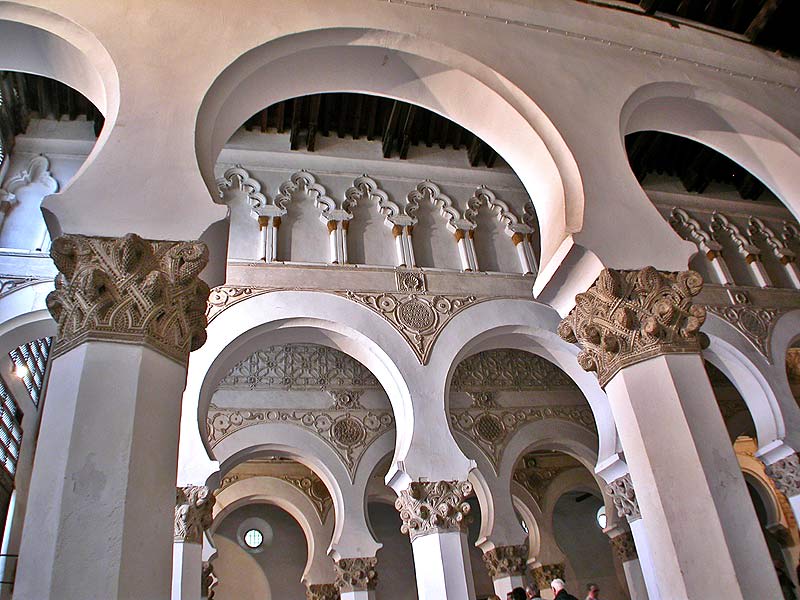In retrospect, a lot has been said and written about enhancing the Tisha B’Av experience. For many of us the “loss” of our holy places is very abstract; we know that historically we’ve suffered national catastrophes, but feeling it on a personal level is another matter. For that reason, and for many years running, the Orthodox Union has offered a very popular and successful Tisha B’Av webcast with live presentations throughout the day.
Another great option falls into the category of Jewish heritage experiences. Photojournalist Judah S. Harris recently ran an extremely powerful essay, Where Synagogues Once Stood, describing his personal Tisha B’Av journey, a tour through Harlem to visit the many former synagogues that “are now churches, some are empty, and some, whose large buildings are no longer existent, have been replaced by other constructions.”

I’ve done a similar tour of Chicago’s “forgotten synagogues” as well as the requisite Jewish Heritage tours abroad, but nothing quite compares to a Tisha B’Av in Rome, walking along the Via Sacra (just to the southeast of the Forum) and coming upon the Arch of Titus for the very first time. I really wasn’t prepared for the relief panel known as “Spoils of War” which depicts the looted objects taken from the Beit Hamikdash. The representation of the menorah and other sacred vessels being carried in a triumphal procession (which have led to speculation that these treasures might still be located in the Vatican’s underground vaults) is powerful enough to remove any feelings of abstraction. The Romans turned our national tragedy into a piece of national artwork and, two thousand years later, it’s still a public monument on display where it continues to generate tourist dollars for the Italian economy.
But I take it back. There is something that compares, and probably outdoes the Roman Forum if you’re looking for a personal sense of tragedy. Spend any one of the nine days in Toledo, Spain. Of all the Jewish Heritage synagogue tours you could do abroad, this one is guaranteed to upset you to your deepest core.
If you’ve ever visited any of the great-synagogues-that-once-were, you quickly discover that the typical “historic” synagogue of the Diaspora no longer operates as a fully-functional place of worship. For the most part, such synagogues are maintained as mini-museums that house the remaining Judaica objects of a once vibrant Jewish community; a community that’s been extinguished at least once if not several times over. And maybe, maybe…if there’s still a small Jewish community in the area because a few Holocaust survivors decided to return and stick around, you might be lucky enough to get a minyan (but only on shabbat, and only if there are one or two Jewish tourists willing to attend). If there’s a Chabad minyan in town, you can be sure it’s operating out of a different location and NOT the once-upon-a-time magnificent, centuries old synagogue.
I’m used to this type of Jewish heritage experience. I’m even comfortable with this experience because if, G-d forbid, these synagogues were fully functional, I’d be left wondering about the myth of Jewish intelligence: how many times do they have to wipe us out in a particular location before we finally get the message that we aren’t welcome there?

Toledo is something else altogether. You can take a tour – and I purposely chose a secular one – where the guide goes on and on about Toledo being the tolerant city of three cultures. You get a detailed overview of the city’s history except the words “expulsion” and “inquisition” are never uttered. The first thing that greets you when you enter the Sinagoga de Santa Maria La Blanca is an over-sized crucifix because it’s still owned by the church. This salient fact, however, isn’t mentioned outright. The other synagogue, Sinagoga del Transito, also confiscated by the church, is currently maintained by the state. In 1964 there was a service there to “celebrate” it’s opening. What was the celebration, I wonder, when it’s primary function is a mini-museum tourist attraction instead of a real synagogue?
But a synagogue that is no longer a synagogue is one thing. A synagogue (which is what it’s still called) with a crucifix, owned by the church, which offers the misleading impression that it might be a Jewish heritage site is a slap on the face. There’s no abstraction about it. When the cost of your entrance fee is going into the church’s pocket with the added insult of fictitious tolerance, it’s a guaranteed dose of reality or maybe something more potent in the form of déjà vu. It’s easy to develop a “been there, done that” attitude towards Jewish history because it’s always the same old story. What’s riveting is the realization that it’s not just history. The destruction and looting of our sanctuaries is an ongoing process that’s still very much alive and well. If you happen to be in Spain, particularly during the month of Av, you can see it with your own eyes… in Toledo.
If not, the OU’s Tisha B’Av presentations (from this year and previous years) are easily accessible at any time by visiting: Webcasts of Tisha B’Av Kinot with many thanks to Rabbi Dr. Tzvi Hersh Weinreb and Rabbi Steven Weil for their inspiring words.
The words of this author reflect his/her own opinions and do not necessarily represent the official position of the Orthodox Union.
